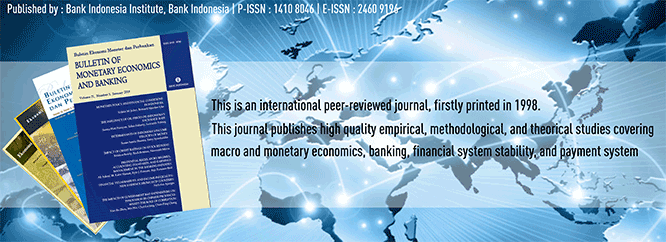
Document Type
Article
Abstract
This paper builds and estimates a small open-economy Dynamic Stochastic General Equilibrium (DSGE) model suitable for the evaluation of central bank policy mix, with a particular application on the Indonesian economy. The model has a rich array of shocks and frictions, including banking and financial frictions. We illustrate how the estimated model can be used to investigate the source of aggregate fluctuations in Indonesia and to evaluate and simulate a policy mix involving monetary and macroprudential policies. Our Bayesian estimation identifies the COVID-19 pandemic shocks as being mainly a combination of adverse supply-side (technology) and demand-side (preference and foreign-output) shocks. We show that a countercyclical capital requirement rule could be a potent addition to Bank Indonesia’s policy mix arsenal. Despite its rich features, the model is scalable and can be readily extended for evaluating other types of central bank policy mix, including monetary-macroprudential-fiscal policy interaction and the inclusion of Central Bank Digital Currency (CBDC).
Recommended Citation
Juhro, Solikin M.; Lie, Denny; and Sasongko, Aryo
(2023)
"An Estimated Open-Economy DSGE Model for The Evaluation of Central Bank Policy Mix,"
Bulletin of Monetary Economics and Banking: Vol. 26:
No.
3, Article 1.
DOI: https://doi.org/10.59091/2460-9196.2126
Available at:
https://bulletin.bmeb-bi.org/bmeb/vol26/iss3/1
First Page
397
Last Page
436
Creative Commons License

This work is licensed under a Creative Commons Attribution-NonCommercial 4.0 International License
Country
Indonesia
Affiliation
University of Sydney

